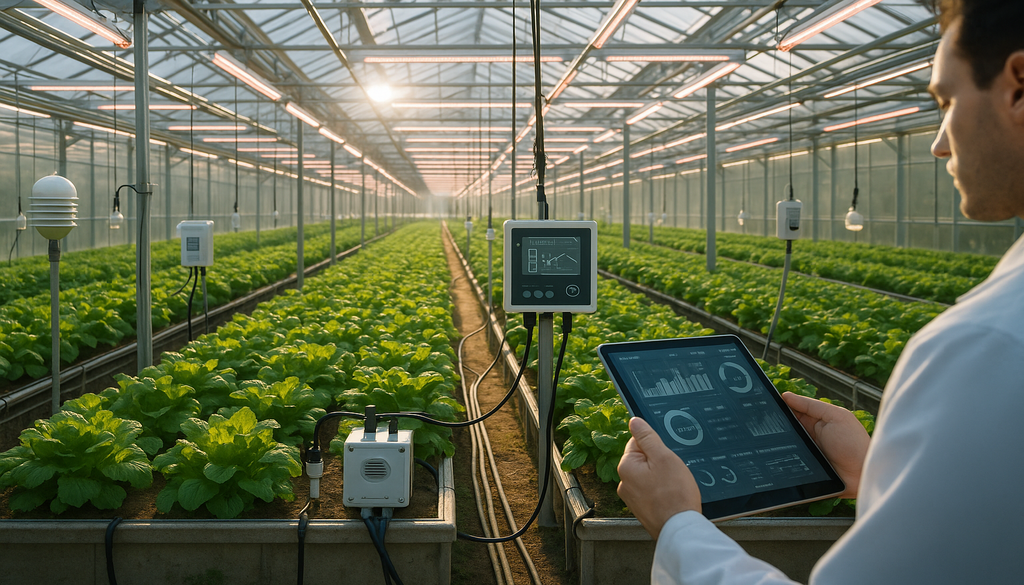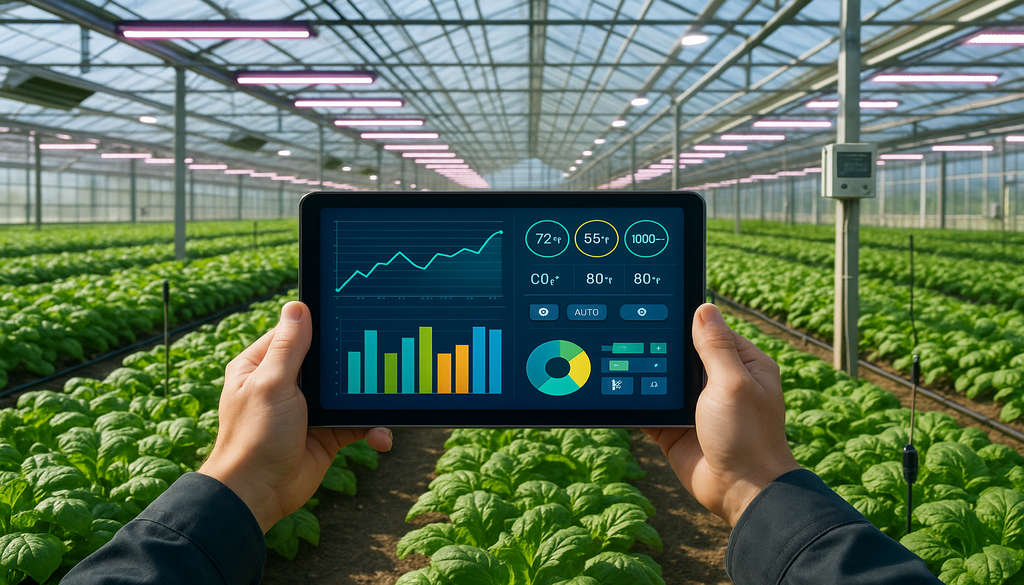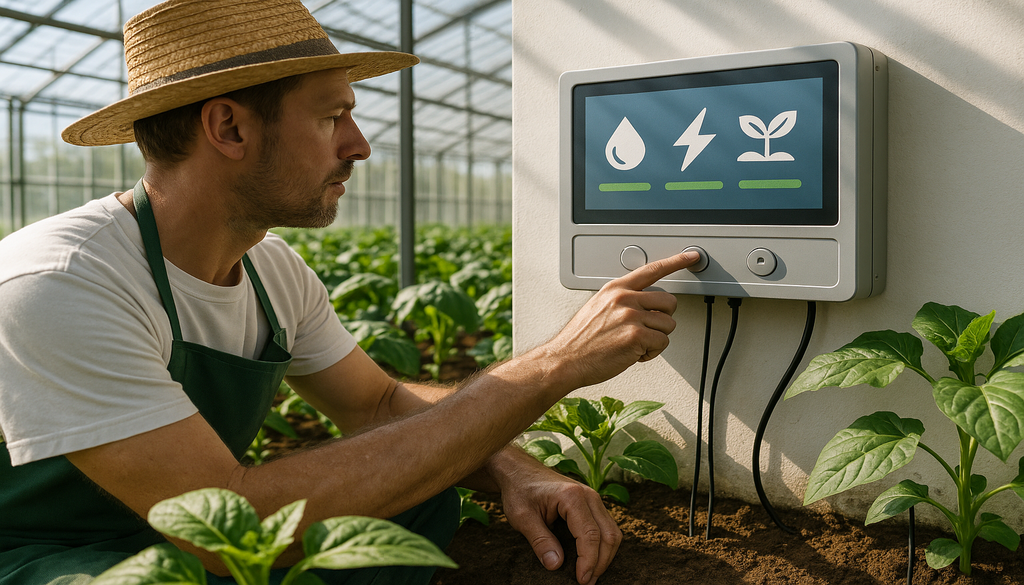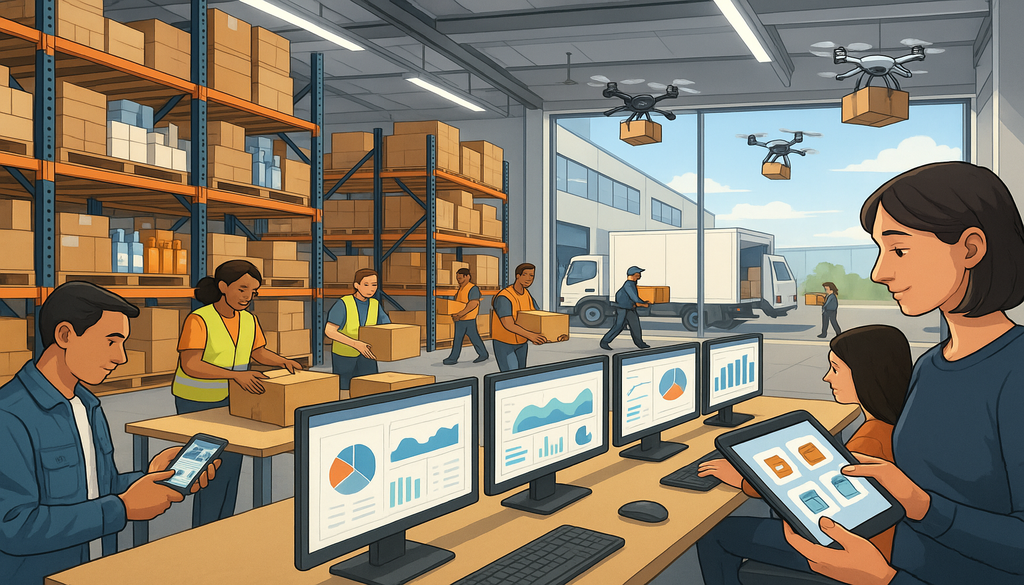
In today’s highly competitive agricultural landscape, greenhouse growers face mounting pressure to maximize yields while minimizing costs and environmental impact. The solution increasingly lies in digital transformation through specialized crop management software. These advanced systems provide unprecedented control over growing conditions, resource allocation, and data analysis that traditional methods simply cannot match. For modern greenhouse operators, implementing the right crop management solution isn’t merely a technological upgrade—it’s becoming essential for maintaining competitiveness, ensuring sustainability, and meeting the growing demands of the market. Throughout this article, we’ll explore how these software solutions are revolutionizing greenhouse operations and providing tangible benefits for growers of all sizes.
Understanding the Role of Crop Management Software in Modern Greenhouses

Crop management software refers to specialized digital platforms designed to help greenhouse growers monitor, analyze, and optimize their cultivation processes. These comprehensive systems integrate various aspects of greenhouse operations, from climate control and irrigation scheduling to nutrient management and harvest forecasting. At their core, these solutions transform the traditionally intuitive art of growing into a data-driven science, allowing for precise control over every environmental variable that affects plant development. The software typically features user-friendly dashboards that present complex data in visual formats, making it accessible to growers regardless of their technical expertise. As greenhouse operations continue to scale up and face market pressures, these digital tools have evolved from optional conveniences to essential management systems that support strategic decision-making.
The functionality of crop management software extends far beyond simple record-keeping, offering greenhouse growers powerful tools that enhance every aspect of their operations. Climate control features allow for automated adjustment of temperature, humidity, and ventilation based on predefined parameters or real-time conditions monitored through integrated sensors. Irrigation management modules enable precise water delivery schedules based on plant needs, soil moisture levels, and weather forecasts, significantly reducing water waste while optimizing plant health. Nutrient management capabilities help growers formulate and adjust feeding regimens for different crops at various growth stages, ensuring optimal development without excess fertilizer application. Additionally, these systems often include pest and disease monitoring tools that can identify potential issues before they become widespread problems, allowing for targeted interventions that minimize chemical use and crop losses.
Modern crop management platforms also excel at production planning and forecasting, helping greenhouse operators schedule plantings, maintenance activities, and harvests with unprecedented accuracy. By analyzing historical growth data alongside current conditions, these systems can predict harvest dates, yield volumes, and even potential quality issues weeks or months in advance. This predictive capability transforms greenhouse management from a reactive to a proactive discipline, allowing growers to align their production more closely with market demands and contracted delivery schedules. Labor management features help optimize workforce allocation by identifying peak work periods and distributing tasks efficiently. The comprehensive data collection and analysis capabilities of these platforms also support continuous improvement, allowing growers to identify best practices and refine their approaches season after season based on concrete performance metrics rather than anecdotal observations.
Key Benefits of Implementing Software Solutions for Greenhouse Agriculture

Precision agriculture represents one of the most significant advantages of implementing crop management software, fundamentally changing how greenhouse operators make decisions. Instead of relying on general guidelines or intuition, growers can leverage specific, real-time data about their crops, environment, and resources to make informed choices. Modern sensor technology integrated with management software monitors countless variables—from soil moisture at different depths to the spectral quality of light reaching plants—providing unprecedented visibility into growing conditions. This wealth of information enables micro-adjustments to growing parameters that can significantly impact crop outcomes. For instance, slight modifications to irrigation timing based on actual plant water uptake patterns rather than fixed schedules can improve root development while reducing water usage by 20-30% according to research from agricultural institutions. Similarly, data-driven nutrient management allows for precise fertilizer application timed to match plants’ developmental stages, enhancing growth while minimizing runoff and environmental impact.
Resource management represents another crucial benefit area where crop management software delivers substantial returns on investment for greenhouse operations. Water usage efficiency typically improves by 30-50% when automated irrigation systems are controlled by software that integrates soil moisture sensors, evapotranspiration data, and weather forecasts. Energy consumption—often one of the largest operating expenses for greenhouse growers—can be optimized through intelligent climate control algorithms that maintain ideal growing conditions while minimizing heating, cooling, and lighting costs. One study of commercial greenhouse operations found that software-controlled systems reduced energy costs by 15-25% while maintaining or improving crop quality. Labor efficiency also increases significantly, as management software helps allocate human resources to where they’re needed most through harvest forecasting and task prioritization features. This optimization becomes increasingly valuable as agricultural labor shortages continue to challenge the industry, allowing operations to maintain productivity with fewer workers or to redirect staff to higher-value activities that require human judgment and skill.
The impact of crop management software on yield and waste reduction has been demonstrated across various greenhouse operations worldwide. A commercial tomato greenhouse in the Netherlands documented a 14% increase in marketable yield after implementing comprehensive management software that optimized growing conditions based on plant development stage and variety-specific requirements. Beyond yield increases, quality improvements often follow software implementation as growing conditions become more consistent and issues are identified earlier. Waste reduction represents another significant benefit, with integrated inventory and harvest management features ensuring crops are harvested at optimal times and moved efficiently through the supply chain. One berry producer reported reducing postharvest losses by nearly 23% after implementing software that predicted ideal harvest windows and coordinated picking schedules with downstream logistics. These waste reductions contribute not only to profitability but also to sustainability goals by ensuring that more of what is grown reaches consumers, maximizing the resources invested in production.
How Crop Management Software Supports Sustainable Agriculture Practices
Modern crop management software provides greenhouse growers with sophisticated tools to monitor and reduce their environmental footprint across multiple dimensions. Advanced systems track resource utilization in real-time, providing detailed analysis of water, energy, fertilizer, and pesticide usage per unit of production. This granular visibility enables growers to identify inefficiencies and implement targeted improvements that significantly reduce resource consumption without compromising yield or quality. Carbon footprint calculation features are increasingly common in comprehensive platforms, allowing operations to measure their greenhouse gas emissions and identify reduction opportunities. Water recycling and treatment monitoring capabilities help greenhouse operations implement closed-loop systems that minimize discharge into the environment. By providing accurate measurements and benchmarks, these software solutions transform sustainability from an abstract goal into a concrete, manageable aspect of operations with clear metrics for success. The data-driven approach also helps growers communicate their environmental performance to customers, regulators, and certification bodies with verifiable evidence rather than general claims.
Soil health management—even in soilless growing systems—represents a critical aspect of sustainable greenhouse production that benefits significantly from software integration. Modern crop management platforms incorporate data from soil sensors measuring moisture, temperature, electrical conductivity, and even biological activity to provide comprehensive health assessments. This information allows for precise adjustments to irrigation, fertilization, and microbial inoculations that maintain optimal growing conditions while preventing degradation issues like salt buildup or pH imbalances. Water usage efficiency features go beyond simple conservation, employing predictive algorithms that anticipate plant needs based on growth stage, variety characteristics, and environmental conditions. These systems can reduce water consumption by 40-60% compared to traditional timing-based irrigation while simultaneously improving crop health through more consistent moisture levels. The software’s ability to integrate weather forecasts with internal environmental data further enhances efficiency by adjusting resource application in anticipation of changing conditions rather than reacting after problems develop.
Regulatory compliance has become increasingly complex for greenhouse growers as environmental, food safety, and labor regulations continue to evolve across different markets. Crop management software simplifies this challenge through automated record-keeping features that document all aspects of production from seed to harvest. These systems maintain comprehensive logs of all inputs applied to crops—including water, fertilizers, biological controls, and pest management materials—with precise timing, rates, and locations. Many platforms now include built-in compliance modules for major certification programs like GLOBALG.A.P., Organic, and Rainforest Alliance, automatically flagging practices that might violate standards and suggesting compliant alternatives. Traceability features satisfy both regulatory requirements and customer demands for transparency by tracking each crop’s complete history. When regulatory inspections or audits occur, growers with comprehensive management software can generate the required documentation in minutes rather than spending days combing through paper records or spreadsheets. This streamlined compliance not only reduces administrative burden but also minimizes the risk of penalties or market access issues resulting from documentation gaps.
Integration Challenges and Solutions for Greenhouse Growers

Greenhouse operations frequently encounter significant integration challenges when implementing crop management software into their existing infrastructure. Legacy equipment compatibility issues often present the first hurdle, as older climate control systems, irrigation controllers, and sensors may lack modern connectivity options needed for seamless data exchange. Data standardization represents another common obstacle, with information from different sources—weather stations, internal sensors, equipment controllers, and external services—arriving in incompatible formats that resist consolidation into a unified management platform. Connectivity limitations in rural greenhouse locations can further complicate implementation, as reliable internet access becomes essential for cloud-based platforms and remote monitoring capabilities. The financial investment required for comprehensive implementation also presents challenges, particularly for medium-sized operations that need sophisticated functionality but lack the capital resources of large commercial producers. Additionally, many greenhouse businesses struggle with the technical expertise gap between their primarily horticultural staff and the IT knowledge required to manage modern software systems effectively. Overcoming these integration challenges requires careful planning and often necessitates phased implementation approaches that prioritize high-impact modules while building toward comprehensive coverage.
Successful software implementation in greenhouse environments follows several established best practices that help navigate the common integration challenges. Beginning with a thorough needs assessment and gap analysis allows operations to identify their most critical requirements and match them to appropriate software solutions rather than being seduced by impressive but unnecessary features. Selecting platforms with open API architectures and established integration capabilities with major equipment manufacturers improves compatibility with both existing and future systems. Phased implementation approaches reduce operational disruption and allow staff to adjust gradually while demonstrating value through early wins in high-impact areas. Working with vendors who specialize in agricultural applications rather than general business software ensures the platform will address industry-specific requirements without extensive customization. Creating a detailed implementation timeline with clear milestones helps manage expectations and resource allocation throughout the process. Establishing key performance indicators before implementation provides objective measures to evaluate success and justify further investment. Many successful implementations also include hardware upgrades alongside software deployment, replacing legacy equipment with compatible alternatives where the efficiency gains justify the investment.
Staff training and adaptation represent crucial elements in realizing the full value of crop management software investments. Comprehensive training programs should be tailored to different user roles within the operation, from executive overviews for management to detailed technical training for daily operators. Identifying and developing internal champions who show aptitude and enthusiasm for the new systems creates valuable peer resources that supplement formal training materials. Creating simplified standard operating procedures that incorporate the software into daily workflows helps staff transition from previous methods without feeling overwhelmed by complexity. Scheduling training during seasonal downturns when operational pressure is reduced allows staff to focus on learning without production demands. Implementing a “train the trainer” approach develops internal capacity for onboarding new employees and provides refresher training as needed. Establishing regular check-ins during the adaptation period helps identify confusion or resistance early so it can be addressed before workarounds become entrenched habits. Operations that successfully navigate the human element of software implementation typically find that staff quickly become advocates for the technology once they experience how it simplifies their work and provides valuable insights that were previously unavailable or required laborious manual analysis.
Comparing Top Crop Management Software for Greenhouse Growers
When evaluating crop management software options, greenhouse growers should prioritize several critical features that directly impact operational effectiveness. Comprehensive environmental control capabilities should include integration with climate systems, allowing for automated management of temperature, humidity, CO2 levels, and ventilation based on crop-specific parameters. Irrigation and fertigation management functionality needs to support multiple delivery methods and incorporate feedback from moisture sensors for precision application. Crop monitoring features should track growth metrics, development stages, and yield projections while flagging deviations from expected patterns. Integrated pest management modules should facilitate scouting activities, document interventions, and track effectiveness while supporting biological control programs. Harvest management and forecasting capabilities help coordinate labor and downstream logistics for optimal efficiency. Labor management features should include task assignment, time tracking, and productivity analysis. Robust reporting and analytics functions transform collected data into actionable insights through customizable dashboards and automated report generation. Mobile accessibility has become essential for modern operations, allowing monitoring and management from anywhere. Financial analysis tools that connect production data with costs help identify profitability factors across different crops and growing strategies. Cloud-based platforms offer advantages in accessibility and automatic updates, though some operations with connectivity challenges may still prefer on-premises solutions with cloud synchronization options.
The crop management software market offers numerous options with varying strengths for greenhouse applications. Priva leads in comprehensive environmental control with exceptional climate management capabilities and strong integration with their hardware systems, making it popular among large-scale vegetable producers. Hoogendoorn’s IIVO platform excels in energy efficiency optimization and custom growing strategies, with particular strength in ornamental production environments. Hortimax provides outstanding irrigation precision and water recycling management, appealing to operations in water-stressed regions. Agrilyst (now Artemis) offers superior crop planning and work management features with intuitive interfaces that reduce training requirements. Grodan’s GroSens system delivers exceptional root zone monitoring and management for substrate-based growing systems. Trimble’s Ag Software provides strong financial analysis and integration with field operations for diversified growers. Each platform continues to evolve rapidly, with development increasingly focused on artificial intelligence applications that can identify patterns and make recommendations based on accumulated data across multiple growing environments and seasons.
Selecting the ideal software solution requires a methodical approach tailored to each operation’s specific needs and constraints. Begin by documenting current processes, pain points, and strategic objectives to establish clear evaluation criteria. Develop a prioritized feature list distinguishing between essential requirements and desirable capabilities. Create standardized scenarios for vendor demonstrations that reflect your actual workflows rather than accepting generic presentations. Evaluate total cost of ownership beyond initial pricing, including implementation services, training, ongoing support, and upgrade paths. Request access to current users in similar operations for candid feedback about real-world performance and support quality. Consider scalability needs for future expansion and additional crops or growing methods. Assess vendor financial stability and development roadmap to ensure long-term viability. Examine integration capabilities with existing systems and equipment to minimize disruption. Evaluate security measures and data ownership policies, particularly for cloud-based solutions. Consider starting with a limited pilot deployment focusing on high-value areas before committing to comprehensive implementation. Request performance guarantees tied to specific operational improvements where possible. Remember that the most sophisticated solution isn’t necessarily the best fit—the optimal choice balances powerful functionality with usability and alignment to your specific operational needs and staff capabilities.
Conclusion
The adoption of crop management software represents a transformative opportunity for greenhouse growers seeking to thrive in an increasingly competitive and resource-constrained environment. These sophisticated digital tools enable unprecedented precision in controlling growing conditions, optimizing resource utilization, and forecasting production outcomes. By converting the art of horticulture into a data-driven science, growers can make more informed decisions that consistently improve yield, quality, and sustainability metrics. The integration challenges are real but surmountable with proper planning and implementation strategies. As these systems continue to evolve, incorporating artificial intelligence and machine learning capabilities, their value proposition will only strengthen. Forward-thinking greenhouse operations are increasingly recognizing that the question isn’t whether to implement crop management software, but rather which solution best matches their specific needs and how quickly they can leverage this technology to gain competitive advantage. The future of profitable, sustainable greenhouse production will undoubtedly be built on the foundation of intelligent, integrated management systems that turn data into actionable insights.
Frequently Asked Questions (FAQ)
Q1: What are the primary features to look for in crop management software for greenhouse growers?
When selecting crop management software, greenhouse growers should prioritize features such as real-time data analytics, climate control integration, pest and disease management tools, and resource tracking capabilities. Look for comprehensive environmental monitoring that includes temperature, humidity, light levels, and CO2. Irrigation and fertigation management should offer precision control with feedback loops from sensors. Production planning and forecasting functionality helps align growing schedules with market demands. Mobile accessibility has become essential for monitoring operations remotely. Additionally, consider the platform’s ability to generate customizable reports, integrate with existing equipment, and scale with your operation. The most valuable systems offer intuitive user interfaces that make complex data accessible to staff with varying technical abilities while providing the depth of analysis needed for strategic decision-making.
Q2: How does crop management software contribute to sustainable agriculture?
Crop management software aids sustainable agriculture by providing tools that optimize resource use and reduce waste. Features like precise water and nutrient application, soil health monitoring, and environmental impact assessments ensure that greenhouse operations are not only productive but also environmentally responsible. By analyzing data from multiple sources, these systems identify inefficiencies and enable targeted interventions that can reduce water usage by 30-50% and fertilizer application by 15-30% while maintaining or improving yields. Energy consumption typically decreases as climate control becomes more precise. Integrated pest management modules support biological control methods and targeted applications that minimize chemical inputs. Waste reduction occurs through better harvest timing and inventory management. Additionally, comprehensive record-keeping simplifies compliance with sustainability certifications and enables growers to document their environmental improvements with verifiable data rather than estimates or claims. This technology supports growers in achieving sustainability goals while maintaining high crop quality and yield.
{
“@context”: “https://schema.org”,
“@type”: “FAQPage”,
“mainEntity”: [
{
“@type”: “Question”,
“name”: “What are the primary features to look for in crop management software for greenhouse growers?”,
“acceptedAnswer”: {
“@type”: “Answer”,
“text”: “When selecting crop management software, greenhouse growers should prioritize features such as real-time data analytics, climate control integration, pest and disease management tools, and resource tracking capabilities. Look for comprehensive environmental monitoring that includes temperature, humidity, light levels, and CO2. Irrigation and fertigation management should offer precision control with feedback loops from sensors. Production planning and forecasting functionality helps align growing schedules with market demands. Mobile accessibility has become essential for monitoring operations remotely. Additionally, consider the platform’s ability to generate customizable reports, integrate with existing equipment, and scale with your operation. The most valuable systems offer intuitive user interfaces that make complex data accessible to staff with varying technical abilities while providing the depth of analysis needed for strategic decision-making.”
}
},
{
“@type”: “Question”,
“name”: “How does crop management software contribute to sustainable agriculture?”,
“acceptedAnswer”: {
“@type”: “Answer”,
“text”: “Crop management software aids sustainable agriculture by providing tools that optimize resource use and reduce waste. Features like precise water and nutrient application, soil health monitoring, and environmental impact assessments ensure that greenhouse operations are not only productive but also environmentally responsible. By analyzing data from multiple sources, these systems identify inefficiencies and enable targeted interventions that can reduce water usage by 30-50% and fertilizer application by 15-30% while maintaining or improving yields. Energy consumption typically decreases as climate control becomes more precise. Integrated pest management modules support biological control methods and targeted applications that minimize chemical inputs. Waste reduction occurs through better harvest timing and inventory management. Additionally, comprehensive record-keeping simplifies compliance with sustainability certifications and enables growers to document their environmental improvements with verifiable data rather than estimates or claims. This technology supports growers in achieving sustainability goals while maintaining high crop quality and yield.”
}
}
]
}



